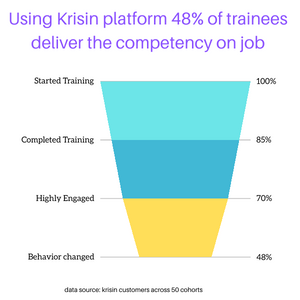
In the evolving landscape of Learning and Development (L&D), understanding the distinctions between Learning Experience Platforms (LXPs) and Learning Management Systems (LMSs) is crucial. Each serves unique functions that, when effectively integrated, can enhance organizational learning strategies.
Learning Experience Platform (LXP): Enhancing Personalized Learning
LXPs are designed to provide personalized learning experiences by leveraging artificial intelligence to tailor content based on individual preferences, learning history, and performance. This approach ensures that learners receive relevant content, enhancing engagement and knowledge retention.
Example: A multinational corporation implemented an LXP to personalize training for its diverse workforce. By analyzing employees' roles, skills, and learning preferences, the platform recommended tailored courses, resulting in a 30% increase in course completion rates.
Learning Management System (LMS): Ensuring Structured Compliance
LMSs are known for their structured approach to training, excelling in managing and tracking programs, which is ideal for organizations with strict compliance requirements. They offer robust analytics, providing detailed insights into user progress, completion rates, and overall course effectiveness.
Example: A financial institution utilized an LMS to deliver mandatory compliance training. The system's tracking capabilities ensured all employees completed the required modules, maintaining regulatory compliance and reducing risk.
Strategies for L&D Professionals: Navigating Current Trends
-
Integrate LXP and LMS for Comprehensive Learning: Recognize that LXPs and LMSs serve different purposes. Integrating both platforms can harness the strengths of each, creating a well-rounded learning ecosystem that balances personalization with structure.
Application: An organization combined its LMS's compliance training modules with an LXP's personalized learning paths, offering employees a comprehensive learning experience that addressed both mandatory requirements and individual development goals.
-
Prioritize User Experience: Modern learners demand a seamless and user-friendly experience. Choose platforms that prioritize intuitive design, mobile accessibility, and engaging interfaces to keep learners motivated and connected.
Application: A company revamped its learning platform to include a mobile-friendly interface and interactive elements, resulting in higher engagement rates among employees who preferred learning on-the-go.
-
Embrace Continuous Learning: Encourage a culture of ongoing skill development by offering a diverse range of learning resources, including microlearning modules, webinars, and peer-driven content.
Application: An organization introduced microlearning modules accessible during work breaks, allowing employees to engage in continuous learning without disrupting their workflow.
-
Leverage AI and Automation: Utilize artificial intelligence and automation to enhance the learning experience. AI-driven recommendations, chatbots for learner support, and automated assessments contribute to a more efficient and adaptive learning environment.
Application: A company implemented AI-driven chatbots to assist learners with course selections and answer common queries, reducing the administrative burden on L&D staff.
-
Promote Social and Collaborative Learning: Facilitate peer-to-peer learning by incorporating social features into your L&D strategy. Discussion forums, collaborative projects, and virtual communities foster a sense of belonging and shared learning experiences.
Application: An organization created virtual communities where employees could collaborate on projects and share knowledge, enhancing teamwork and collective problem-solving.
-
Stay Informed About Emerging Technologies: Keep an eye on emerging technologies like virtual reality (VR) and augmented reality (AR). These technologies have the potential to revolutionize immersive learning experiences, particularly in industries where hands-on training is crucial.
Application: A manufacturing company adopted VR simulations to train employees on complex machinery, providing a safe and immersive learning environment that improved skill acquisition.
By strategically integrating LXPs and LMSs, prioritizing user experience, fostering continuous learning, leveraging AI, promoting collaboration, and staying abreast of emerging technologies, L&D professionals can create a dynamic and effective learning ecosystem that meets the diverse needs of modern learners.


